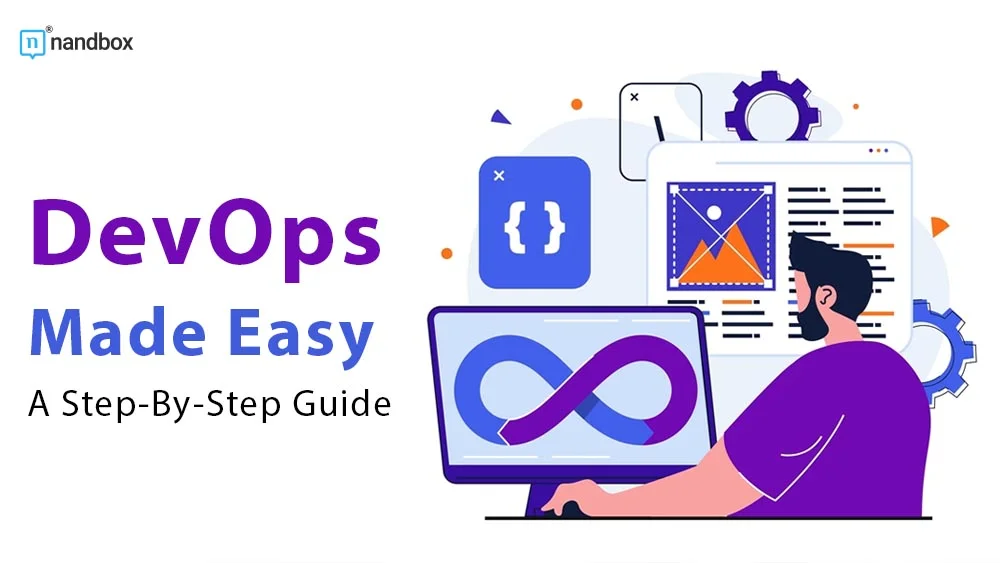The world is dynamic, and it’s constantly shifting. Each day, we keep getting surprised by new aspects emerging, completely changing the way we comprehend everything around us. These aspects are not limited only to our daily lives; they also include many other things. Industries are one of the many things that are witnessing major transformations. App development is one that we should focus on. The app development market is the most dynamic and fast-paced market ever. With many new technologies entering the picture and many more to come, the market is expanding and reaching new horizons. From no-code development, SaaS products, etc. One of the many new approaches found now in the development market is DevOps. We know it may sound like these terms you hear and think are too complicated to understand. However, this article would be a DevOps-made, easy guide for everyone eager to learn more.
What is DevOps
Sometime around 2007, developers and people involved in the development industry started to express some doubts and concerns about the traditional processes and tools they were abiding by. Their concerns included the lack of communication found during the development process as well as how slow and inefficient the tools and practices they were using were. Prior to raising these concerns, a new aspect appeared to solve these issues. This aspect would be DevOps. Some developers see DevOps as more of an ideology or philosophy than a set of procedures. Being a combination of “development” and “operations,” DevOps describes a novel method of development. This approach combines the tools, power, and procedures of the development team and operations team across the organization.
Usually, in all companies, the development team would be the one who’d write all the codes and create the application or software infrastructure. On the other hand, the operation team would oversee the application and utilize the codes. Both processes would happen separately, without any communication between the two parties. DevOps then came to eradicate all the communication gaps that usually led to poor performance and disappointing final outcomes. Such a combination or assembly of forces that DevOps made not only gave the development process a new perspective but also improved both the speed and quality of the application or software being developed.
How does DevOps Improve The Development Process?
In addition to improving the development market and giving it a whole new perspective and depth, DevOps’s benefits are technically uncountable. One of the benefits that we gave a glimpse of above is speed. The collaboration and communication that the DevOps approach was able to create made it much faster and easier to go through the development process. Meaning that the time it would take to develop software or an application back then would be reduced, and it would take a fraction of this time now. This will not only make it easier to adapt to new technologies but also improve the user experience.
DevOps as a service also helps improve the security of the software or application being developed. Many DevOps practices that we are going to go through later maximize the security of the application and deploy much more powerful security practices. Lastly, the final advantage we are going to mention is the delivery. As DevOps made the development process much faster, this led to better and more rapid delivery. Teams can now keep up with any updates and deliver them to users in literally no time. Also, any bugs or errors that arise can be fixed in an optimal amount of time.
DevOps Lifecycle
The DevOps lifecycle is the flow of phases and procedures that occurs throughout the development process. This lifecycle contains eight phases, which are:
1. Plan
Throughout this phase, both teams—the operational and development teams—start to gather everything they can regarding need and demand in the market. This gives them the chance to see what they are working with and how their product could fulfill these needs. After gathering all the information needed, the plan is set to be followed.
2. Code
This phase includes all the magic done from the development team’s end. Throughout this phase, all the codes needed would be written, usually using DevOps tools and practices to make the process faster and easier.
3. Build
After completing the coding phase, the development team would move on to constructing the codes in the format required by the application or software. Developers can use tools like Git to go through this phase.
4. Test
Nothing can pass without testing. In this phase, both teams run various tests on the initial application or software to make sure that any pitfalls or errors are fixed before the deployment and release of the product. They can also ensure the quality of the codes they build.
5. Release
This phase is where the operational side steps in. The release phase is when the final version is reviewed one final time by going into an environment the same as production. This ensures that there were no errors that were overlooked during testing.
6. Deploy
Finally, it is time to shine. The deployment phase is where the application or software gets approval to be officially moved into production. It can now be released publicly and used by end-users
7. Operate
After the product is now in use, the DevOps team is now on an operating mission to manage and keep an eye on the app’s or software’s performance. They will also offer support to users.
8. Monitor
After users start to engage and interact with the application or software. The DevOps team start to monitor these interactions to learn more about the user’s behavior and needs. This will help them make changes in the future based on what they monitored and the data they gathered.
Best DevOps Practices
I. Continuous Integration
Continuous integration is a DevOps practice that ensures quality and reliability by having developers integrate their contributions frequently. It also allows them to detect and eliminate system errors quickly. By continuously integrating their work, developers can verify that all parts of their software are working correctly before deploying it to production. This reduces the risk of system crashes and helps maintain fast release cycles.
II. Continuous Delivery
Continuous delivery is an important practice for optimizing the development process. It enables teams to release code faster while ensuring that any changes are thoroughly tested and validated before they go live. Continuous Delivery includes automated tests, which can run both locally and in the cloud. By consistently validating code changes, teams can identify potential issues early on in the process and quickly deploy fixes to prevent customers from experiencing bugs or crashes.
III. Automation
Automation is a key DevOps practice that significantly helps to accelerate the software and application development process. With automation, you can write scripts or install pre-packaged tools to automate system processes, operations, and tests. Automating these processes removes manual steps from the development process that are usually time and resource-consuming, resulting in faster release times and more reliable development.
In Summary
DevOps is a novel approach that combines the tools, power, and procedures of the development team and operations team across the organization. Its benefits are technically uncountable. However, with the right implementation of the cycle, as well as all the important strategies. You can rest assured that your application will not only match your particular needs, but will also exceed them with robust delivery, ultimate security, and astounding speed.






